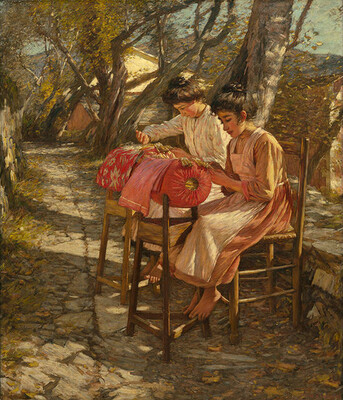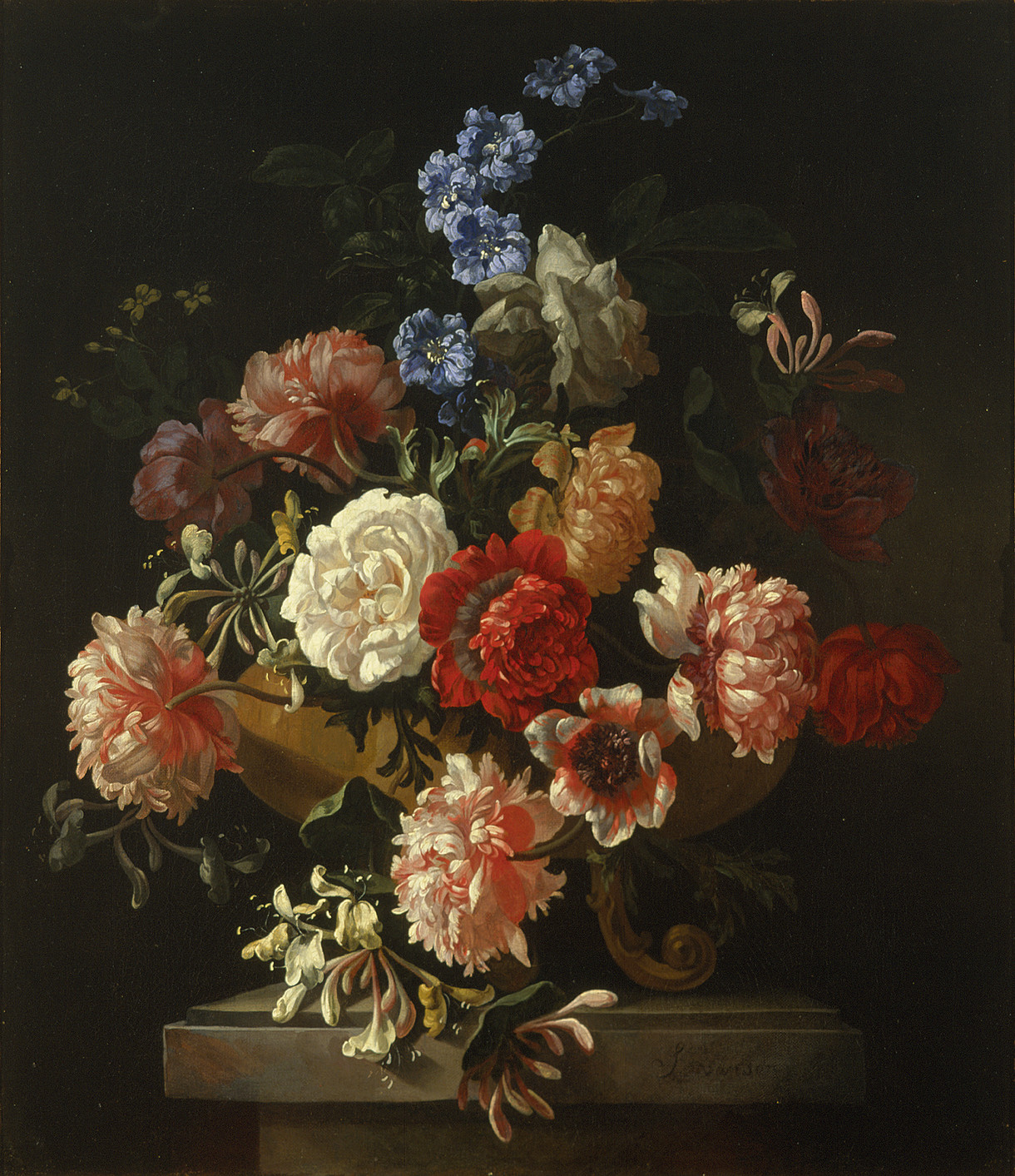B.
Making Ligurian Lace by H H La Thangue
Collection
This article first appeared as 'Artist chased the sun for the right light, warmth' in The Press, 19 October 2016.
Shunning the English winter, the painter Henry Herbert La Thangue – each year from 1901 – left his home in the Sussex countryside in pursuit of Mediterranean warmth and light. Starting out in Provence, he made his winter base from 1904 to 1911 in coastal Liguria – the Italian Riviera – taking inspiration in its fishing villages perched on steep hillsides; painting outdoors in its invigorating combination of sea and mountain air.
In England, La Thangue was drawn to rural life and traditional labour as subject-matter – farm hands and fisherfolk, focusing on rustic, disappearing forms of labour. In Liguria, he painted luminous, Impressionistic landscapes; youthful vendors of oranges, flowers and poultry; and lacemakers. The region was renowned for its bobbin lace – fine, decorative cloth made by deft hands, countless threads on spindles ordered and reordered into intricate designs.
Lacemaking held a valuable role in ‘the waved washed villages where the laces where made’, as a visitor in this period noted,
‘while the men were engaged in fishing… their wives and daughters… worked diligently with the bobbins or the needle, producing well paid laces, the price of which added to the family comfort or formed a sum destined for the daughter with which to start in housekeeping when the lover returned from the perils of the deep to claim the young girl whom he had courted during the previous winter.’
La Thangue was described as a ‘lyricist of the sun’ when Making Ligurian Lace was first exhibited in London in 1907. In 1912 it was one of twelve paintings sent from England for display at the Canterbury Society of Arts, and it was purchased for the collection. A local reviewer enjoyed it for ‘the riot of colour… the shadow-flecked pathway… and the sense of movement and concentration’.
La Thangue’s painting technique was distinctive – he worked directly onto canvas without making preparatory studies or sketches. He also became a leading figure in bringing the ideals of French plein-air (‘in the open air’) painting to Britain, influenced by French Impressionism and the work of Jules Bastien-Lepage. In 1914 his individualistic approach was appreciated by the painter Walter Sickert, who described his ability to render ‘an opaque mosaic for recording objective sensations… in a personal manner.’
La Thangue’s preference for unspoilt locations and rustic simplicity became harder to fulfil in his later years. As popular tourism expanded along the Italian coast in the 1920s, with rail tunnels constructed through mountain passes bringing holidaymaking throngs, La Thangue recognised that ‘his Liguria’ was gone. In 1929 he gave his sorry lament that ‘all of these regions have been spoilt by the war and still more perhaps by peace’.


